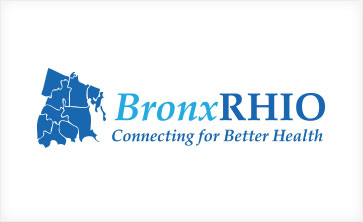
Bronx RHIO was one of four Qualified Entities selected by the New York State Department of Health for a Medicaid Claims Integration Pilot to support Delivery System Reform Incentive Payment (DSRIP) projects.
The Bronx RHIO and the two Bronx-based performing provider systems (PPS) agreed that obtaining Medicaid claims data was critical to having as complete a data set about their patients as possible. The integration of the two data streams provides more complete data to providers for value-based payment programs (VBP) and demonstrates that the matching of patients could be reliably accurate.
The Bronx RHIO pilot aimed to determine which demographic fields were required for accurate patient matching between claims files and the Bronx RHIO Master Patient Index, identify how many attributed patients were already known to the RHIO, and show whether integration of pharmacy data could improve the RHIO’s ability to provide users with information on patients’ medication adherence patterns.
The analysis succeeded in identifying the degree to which various demographic fields influenced matching rates. Fifty-nine to 64% of patients in the claims data were known to Bronx RHIO and 48% more medication-related data for specific asthma-related medications (those required for HEDIS measures) was available in claims data than in the clinical data alone.
Exact matching on four identifiers (Medicaid ID, DOB, Last Name, First Name) found that only 42% to 45% of the patients in the attribution roster were also in the RHIO data. The claims data included data from all providers, many of which were not providing data to the RHIO. Matches increased to 59% and 65% respectively when they were made manually, accounting for typing errors, etc., demonstrating that complex matching algorithms will be required to obtain the highest accuracy in matching.
HEDIS measures reliant on medication adherence data have high dollar value for DSRIP VBP, as poor adherence often translates to higher acute care costs. Identifying patients whose clinical data indicated prescriptions or the clinical need for outpatient medications is only one part of the adherence equation. Knowing which patients or groups of patients did not have claims for medications, and therefore could not have been taking them, provides key data to providers about which patients’ healthcare quality (and related VBP payments) can be improved through targeted medication adherence improvement strategies.
Providing claims data for attributed patients unknown to Bronx RHIO would signifi cantly enhance the data available to the PPSs through Bronx RHIO, impacting the PPSs’ claims-based performance scores.
The overwhelming conclusion of the pilot was that integration of the two data sets would provide signifi cantly more data about patient utilization and clinical status than was available from either data set alone.
